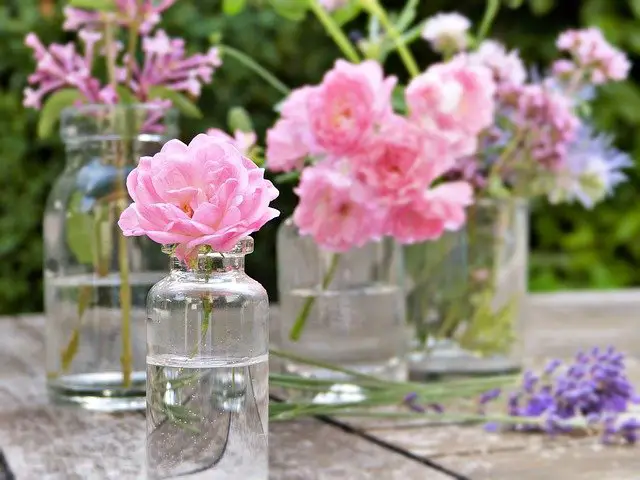Those who make bonsai an art do not consider the rose bonsai as a valuable bonsai as its flowering and leaf development will never equal the aesthetic requirements of a traditional bonsai. Fortunately, however, there are many professionals in the sector who want to experiment with this type of cultivation because the final result is very pretty.
There are many types of roses with innumerable varieties that can be traced back to the Rosaceae, as well as as many hybrids; therefore the rose is a plant that offers itself in different shapes and colors.
But like all flowering plants, even the rose does not completely adapt to become bonsai, but it still creates that pleasant disproportion between the flower that remains of natural size and the plant that is easily reduced.

And this is what a rose bonsai looks like: the flowers are perfect and sometimes even numerous and the stem is tortuous and often irregular. The result is a combination of grace and spectacular contrast. For this reason, it is often used in impressive floral compositions.
WATERING
The rose bonsai likes to be in an airy environment with excellent sun exposure. The rose wants a lot of light and a lot of water, to be watered regularly. However, it is always important not to overdo it and avoid stagnation of water that does not help its roots.
At this point, it is good to distinguish when and how much the plant should be watered, also considering the period and the climate. In fact, in the summer months, it is good to water it up twice every day, while in the winter and humid months it is enough to water it once a week.
If the rose bonsai is always outdoors and has to overcome both the days of intense summer heat and the frosts of the harshest winter, it is advisable not to water it in these particular periods, but rather to only wet the ground. It is necessary to avoid watering during the hot hours of the summer season, while during the winter season it is necessary to postpone the intervention if frosts are expected.

The water must be poured directly on the ground to avoid affecting the foliage.
It is necessary to water slowly and repeat the operation after a few minutes to allow the soil to retain the maximum amount of water.
PRUNING
There are traditional bonsai techniques that are not practiced with the rose. So how do you go about modeling the rose bonsai? Certainly not with tie rods or wires, but with the pruning of branches and roots at the time of repotting. In the case of abundant blooms, it is good to intervene on the flowers themselves delicately to obtain particularly graceful effects.
The various prunings must be performed in February and March. While the other pruning, called maintenance, can also be done during the year to remove those dry parts of the plant.
However, the cuts must be made with disinfected and sharp blades to avoid scars and damage of any kind. On the cuts, it is then necessary to apply a putty for a speedy recovery and as protection from any parasites.
Pruning interventions aim to give the bonsai the shape of one’s liking. The best time to prune roses coincides with the end of the winter season (February March). During the year it is possible to carry out soft maintenance interventions that aim to consolidate the result and to eliminate broken or diseased branches.
For the interventions, it is necessary to use specific tools for bonsai with sharp and disinfected blades. Larger cuts must be treated with healing putty which, in addition to accelerating healing, creates a barrier to parasites.
Repotting
The best period for repotting rose bonsai coincides with the end of the vegetative rest period when the plant is preparing for the new vegetative season. With repotting, the pot and the soil are replaced, as well as intervening on the root mass to cut off the largest roots.
A quality substrate must be used to ensure good drainage. A mixture composed of half of the universal soil and half of peat and sand in equal parts are indicated.
Before filling the pot with soil, a grate or crushed stone should be placed over the drainage holes to prevent the drainage of water.
15 Unique Bonsai Tree Ideas That Will Blow Your Mind
Safety Practices
We have reached the final stage of this guide on how to create a rose bonsai. To conclude in the best possible way, it is very useful to know how to prepare (and consequently protect) your plant against any possible attacks by parasitic animals.
The latter can be both of a vegetable nature (such as mold) and animal origin (such as spiders and aphids). Therefore, intervene preventively and, only in case of strict necessity, use insecticides and other poisonous medicines.
If your bonsai undergoes a persistent attack by aphids, you must remove the dark white stains that are formed using a very common toothbrush: rub vigorously and decisively where it is necessary.
In the presence of scale insects, the whitish encrustations must be removed with the aid of a toothbrush. In addition to manual intervention, the foliage can be sprayed with a solution based on pine oil.
